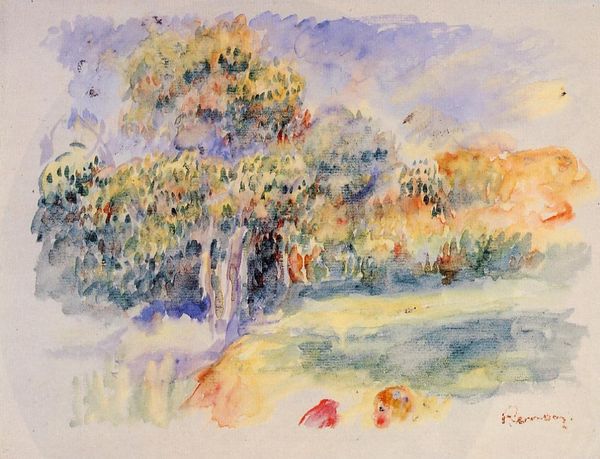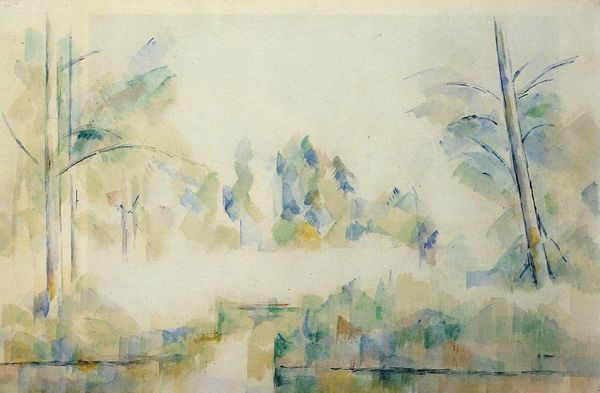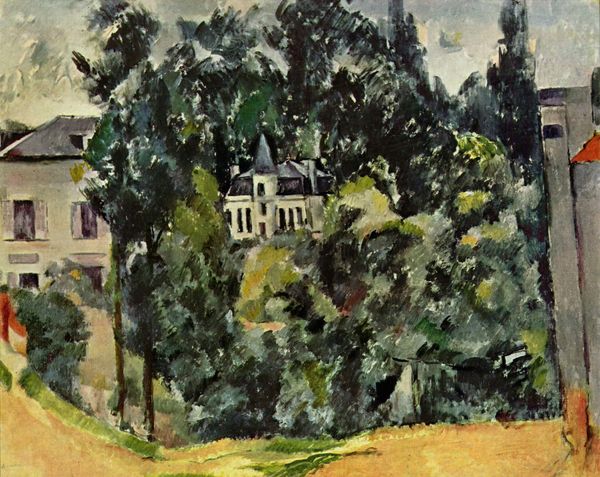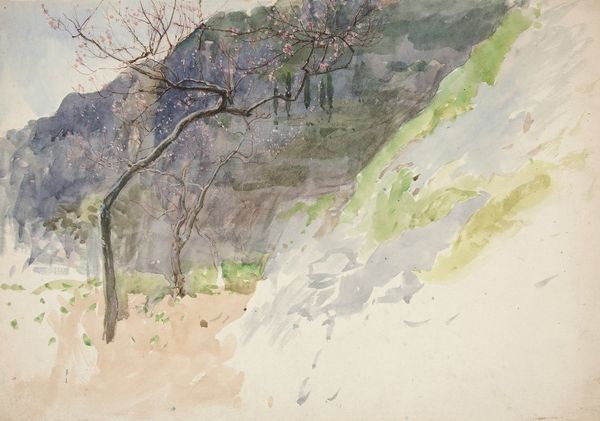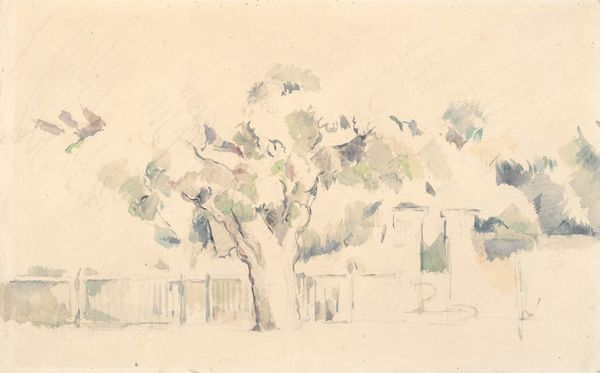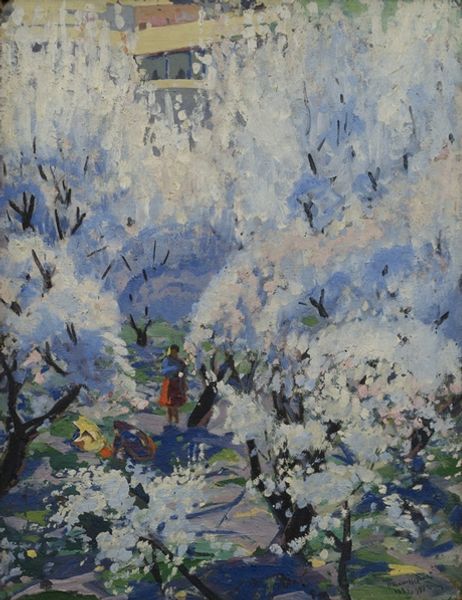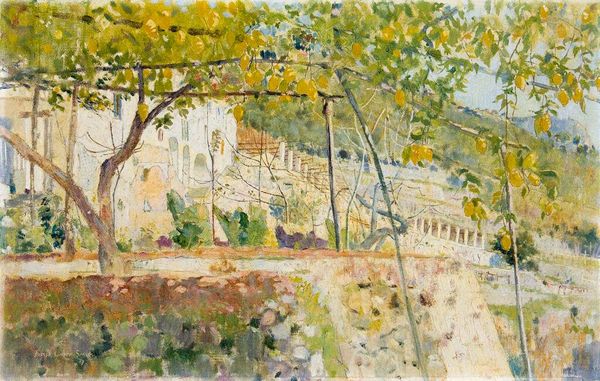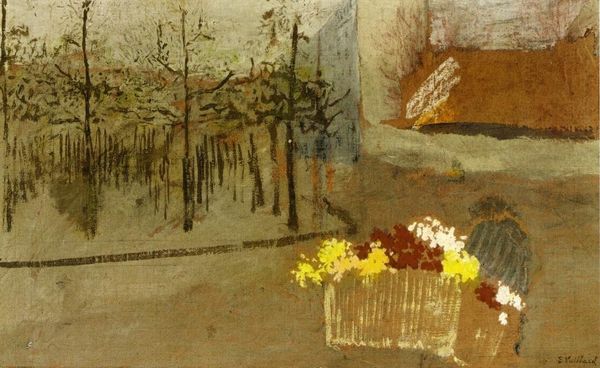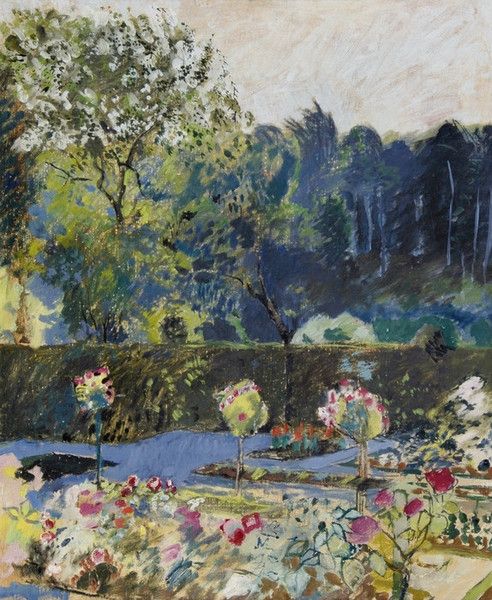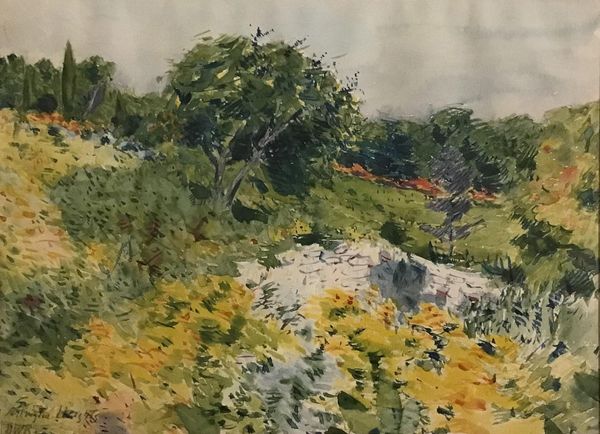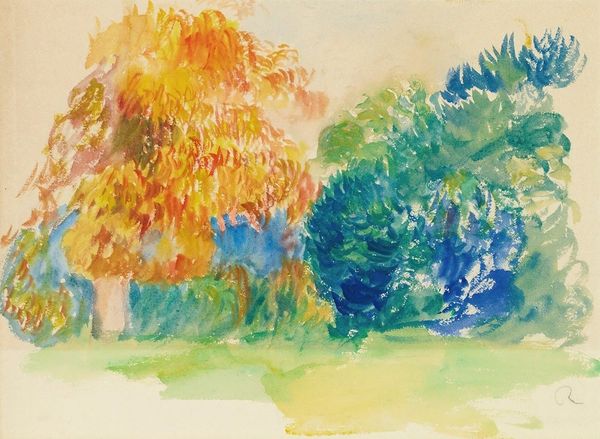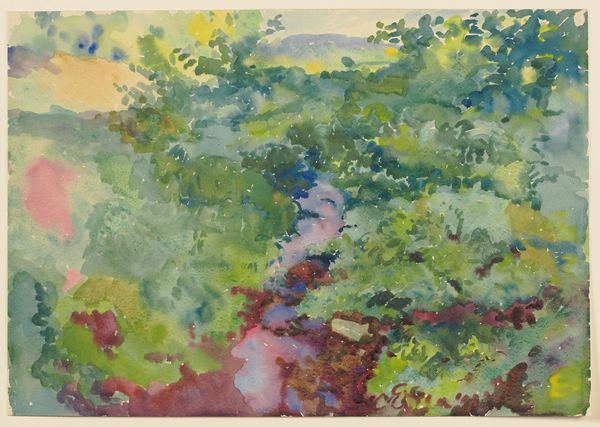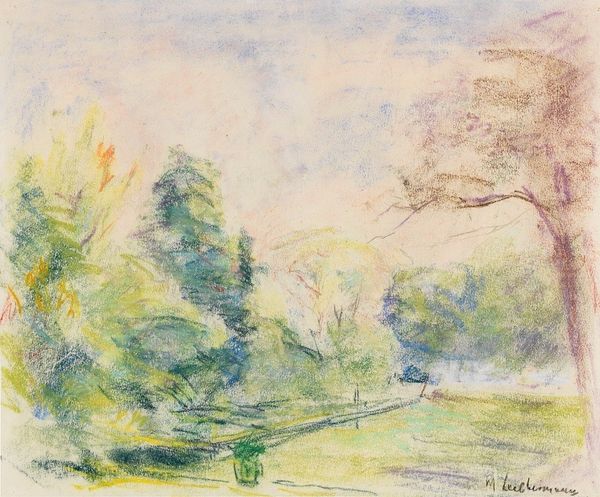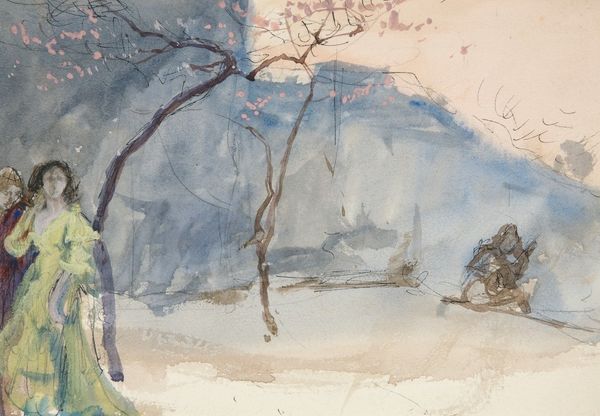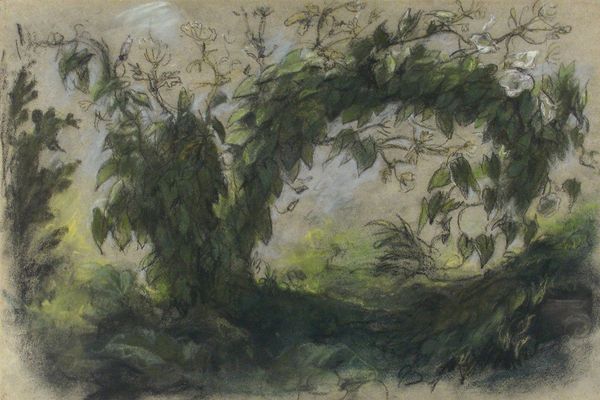
painting, plein-air, watercolor
#
painting
#
impressionism
#
plein-air
#
landscape
#
oil painting
#
watercolor
#
watercolour illustration
#
watercolor
Copyright: Public Domain: Artvee
Curator: Winslow Homer’s "Orange Trees and Gate," painted in 1885. Look at the interplay between the watercolor medium and plein-air approach, how that directly shapes the finished work. Editor: It's so luminous. I feel like I'm stepping into a sun-drenched orchard. The gate almost fades into the light. Curator: Consider the choices Homer made about this paper itself. He opted for a rough texture. Think about how that affects the way the pigment is absorbed, giving that broken, dappled quality. Was this stock paper? Commissioned? How much would he have had to work to prepare its surface for working "en plein air" in direct sunlight and fluctuating humidity? Editor: The composition is striking. The contrast between the soft foliage of the orange trees and the rigid geometry of the white gate and its brick pillars feels intentional, perhaps symbolic? Curator: Indeed. Remember, this piece comes from a period where there were complex questions around land use and tourism in Florida, specifically how it was advertised for wealthy northerners. We can ask whether Homer is critiquing those practices through this composition by foregrounding the natural beauty against those elements of "civilization" as they existed then. Editor: Perhaps he’s playing with themes of enclosure, of cultivated versus wild spaces, which feels appropriate considering it's hanging here, now. The art market thrives on exclusivity, influencing how such landscapes are perceived and valued, often shaping them to mirror pre-established ideas of "the picturesque," and thus selling tickets! Curator: A fair point. Looking at it from a material standpoint, I’m intrigued by his watercolor layering. Notice the layering, from initial washes to the bolder orange hues defining the fruit. You see an example of a real tension between planning, accident, and process when compared to painting "on location" indoors. What was happening to the paper? How fast did he need to move? Editor: Absolutely. The spontaneity feels immediate. The blurred areas against the crisp whites—a fleeting impression. It captures the transience of a single moment. I really get that, yes, it is painting in the sunlight. Curator: Understanding Homer's production methods enriches the entire experience, which, in turn, alters the reception. Editor: A fitting work to ponder within the museum’s gates—a microcosm of our interaction with nature, filtered through culture and commodification.
Comments
No comments
Be the first to comment and join the conversation on the ultimate creative platform.
